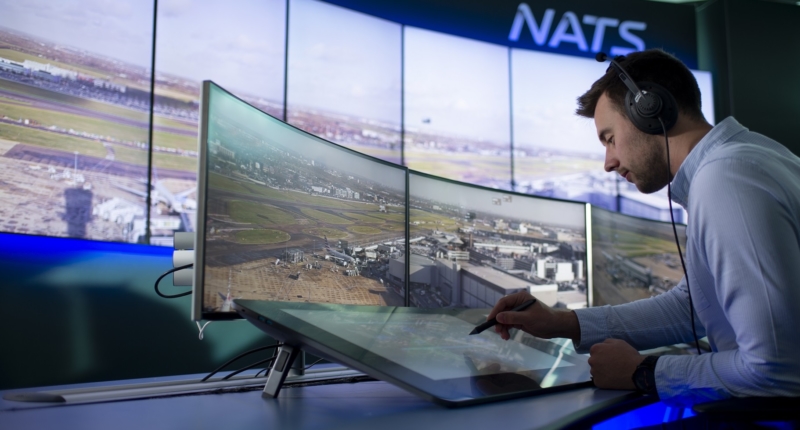Challenging our digital tower assumptions
19 February 2019A decade ago, digital towers were a niche concept, confined to a small part of the industry. Fast forward to 2019 and they are now an operational reality for a growing number of airports around the world. From London to Singapore via Budapest and Colorado, airports of all sizes and types are either going ‘digital’ or preparing trials to do so.
These are the pioneer airports that have recognised the opportunities that this now maturing technology can offer. But, the idea that a digital tower can mean only that you look to replicate exactly what a controller can already see – the application we see most of around the world – is forcing constraints on the technology that don’t need to exist.
This technology is revolutionary, so why strive to only recreate what we already have?
As with any emerging technology, this approach is understandable and in some circumstances – where space is limited or as a way of consolidating services – right and appropriate to meet that airport’s needs, but we should also be open to other possibilities. Not all airports will want to ‘remote’ their operation to a location off-site, but that doesn’t mean they can’t benefit from using digital tower technology.
The real transformative power lies in using the technology to augment and improve an existing operation in order to create a ‘digital airport’ and that is what we’ve been working on with Searidge Technologies over the past 18 months.
In January, we unveiled the world’s first live Ultra-HD, 4K Digital Tower Laboratory. Located within the tower itself at Heathrow Airport, there we are developing tools and concepts designed to enhance the benchmark operational service the controllers deliver, having recognised that we have now reached the limits of human performance.
By bringing the technology development laboratory space within touching distance of the live operational environment means we are benefitting from using real data as part of our work, while the controllers can feed their insights into us directly as we’re building concepts and validating prototypes; reducing the typical development and deployment cycle from years to a mater of months. And working closely with the airport means we can direct our energy towards addressing very specific problems, the first of which is improving the airport’s resilience during ‘tower in cloud’ operations.
On around 15-20 days a year, Heathrow’s 87 metre high tower can disappear into low cloud, meaning the controllers cannot see the runways and taxiways, despite conditions being clear at ground level. In these conditions, the controllers have to rely on radar which means a 20% reduction in the landing rate. For an airport that’s as capacity constrained as Heathrow, this cut in capacity immediately creates ripples of delay and disruption for the rest of the day.
We are now testing whether a distributed network of cameras around the runway exit points, together with Searidge Technology’s AI platform AIMEE, which then interprets those images and alerts the controllers, can be used to help get that lost capacity back.
This isn’t about replacing the controller, but recognising that there are some things AI can simply do that either a person can’t, or would find very difficult. A controller could never simultaneously monitor every one of Heathrow’s 34 runway entry/exit points, but AI can, and it can do it every second of every minute of every hour of every day. What we are striving for is human and technology working together in harmony… and with greater efficiency and safety.
The point I’m making is that a digital tower can be whatever an airport wants and needs it to be, from the international hub through to the small, but vital remote island airfield, and we are all missing a trick if we limit our thinking.
IATA forecasts that passenger numbers will hit 7.8 billion by 2036 and that increase in demand is going to affect everyone, from the biggest hub to the smallest regional airfield.
Those that meet that challenge most successfully will get the mix right between skilled people, robust systems and a pioneering mind-set. And there is no doubt in my mind that that includes a foundation built on technologies and tools that support new ways of working, and no where is that more clearly seen than in the rise of the ‘digital airport’.
Find out how your airport can benefit from these solutions and many others by becoming part of our Digital Airport network. Benefit from collective learning, industry leading expertise and a pioneering spirit that aims to change how we manage air traffic at the world’s airports.
And if you’re coming to the World ATM Congress in Madrid in March, come and see us on stand 826.
Comments
Please respect our commenting policy and guidelines when posting on this website.
